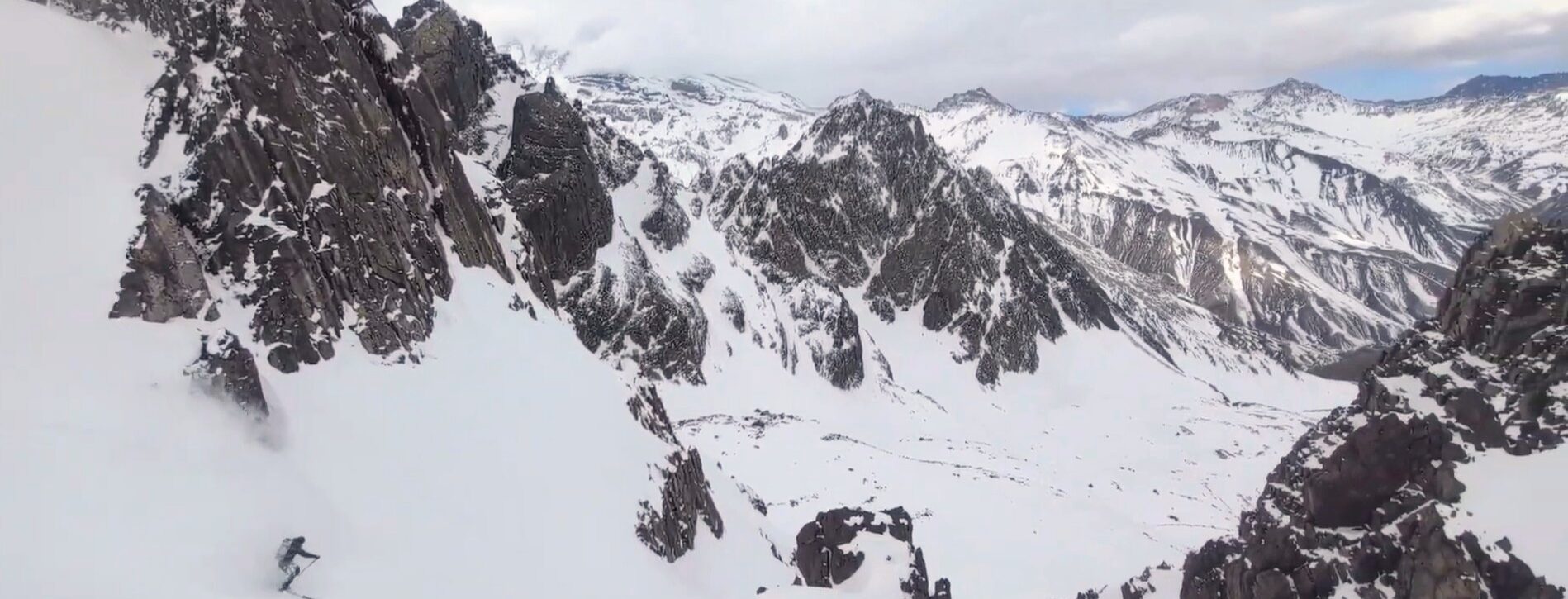August 2025
On a hot August day in Durango I waxed my skis on the deck. The sun beat down on my sweaty back, and melted the wax deep into the pores of my skis. They would need it, because over the next two weeks they would take me up and down one of the world’s greatest mountain ranges: the Chilean Andes.
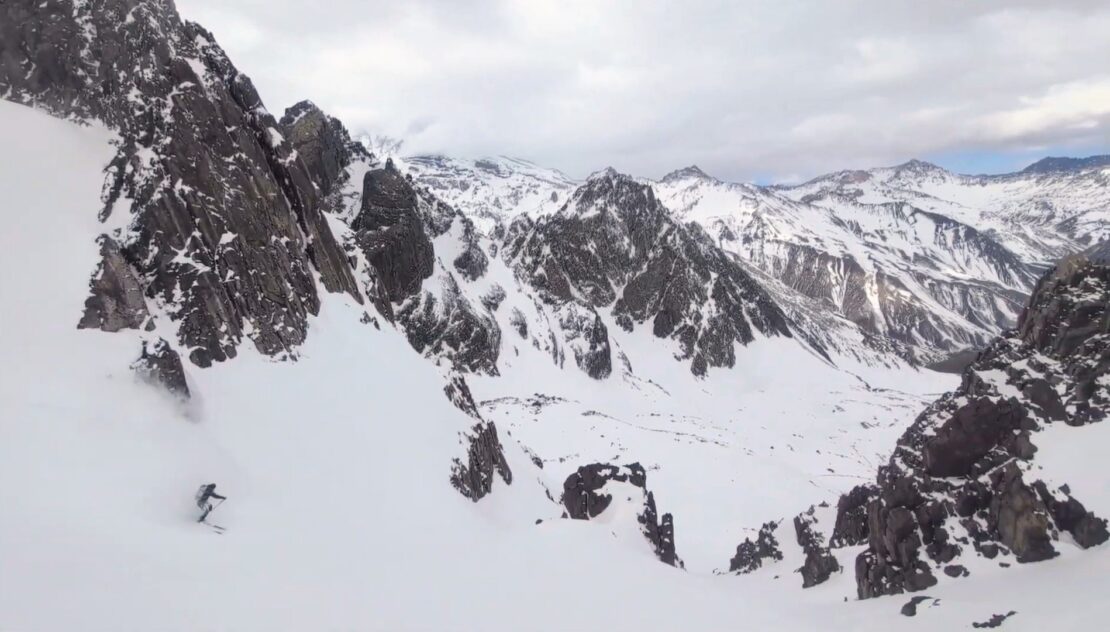
A decade prior I’d read a trip report about skiers in a mountain valley near Santiago, Chile. This valley had no ski areas, was full of 15-20,000 ft peaks, and was home a village of 40 people. El Cajón del Maipo – the Maipo River gorge. The Maipo river is the main river flowing through the Santiago Metropolitan Region, and the Cajón is well known to Santiago residents as a summer vacation spot. I spent my (northern) winter pouring over maps and combing the Spanish Internet for more information, but found no valuable information besides that old blog post from 2014. So, armed with little more than a topo map, blurry satellite images, and Instagram selfies from Chileans on vacation, I convinced my two friends to join me on a hunt for August powder snow.
Arriving in Santiago to palm trees and t-shirts, we drove to the east, up and up into the Andes Mountains. The Chilean Cactus, locally known as quisco, looks just like the tall Saguaro Cactus in Arizona, and covered the dry mountainsides along the windy canyon road. Forests of cactus are perhaps not the sight you want to greet you on a ski trip, but we kept the faith, and the road took us higher and higher until we arrived at the village of Baños Morales.
THE TOWN
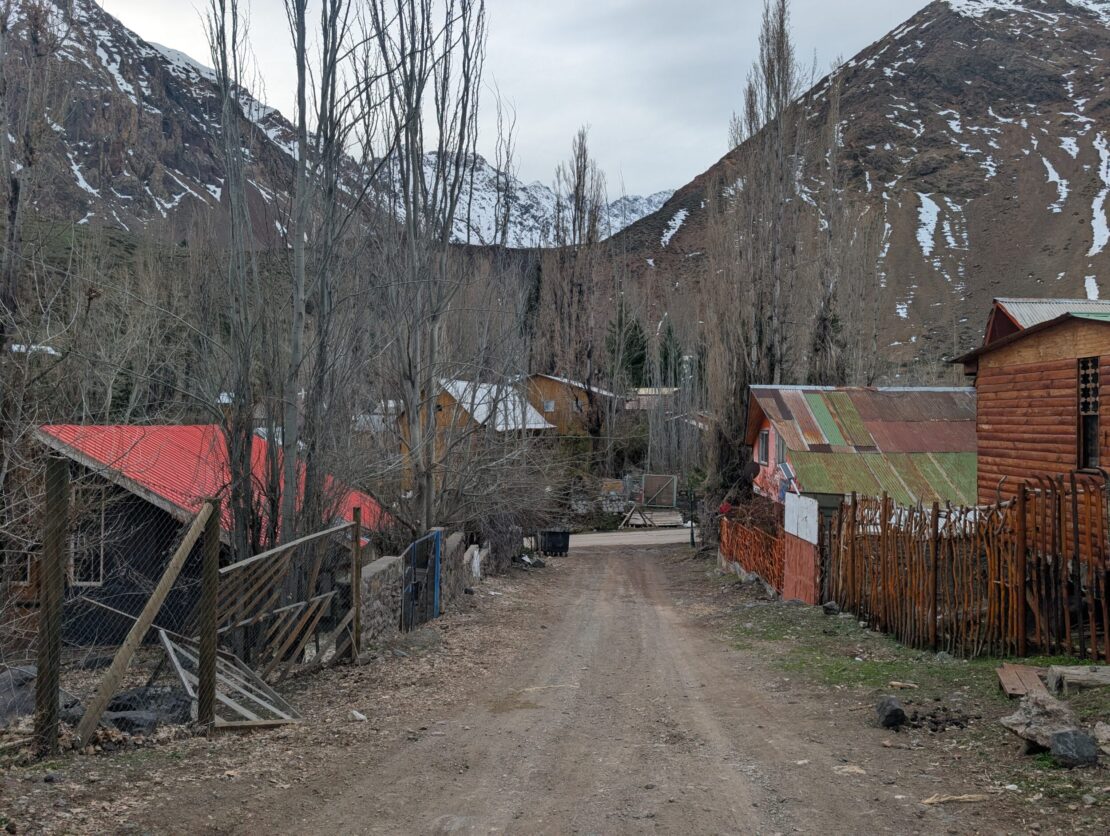
Dirt streets and a random assortment of homes of questionable build quality make up the small place we would stay. The market had closed shop years prior, so we’d packed two weeks of food from down valley.
We checked into the Hostal Piolet (Ice Axe Hostel) and met with its wonderful owner Iván, who is an accomplished Chilean ski mountaineer and ski coach. Iván welcomed us warmly, told us how the hostel worked, and then left us alone – all alone – for the duration of the trip. Our new home was a hut all to ourselves without any other skiers and a road that would quickly become snowed in.
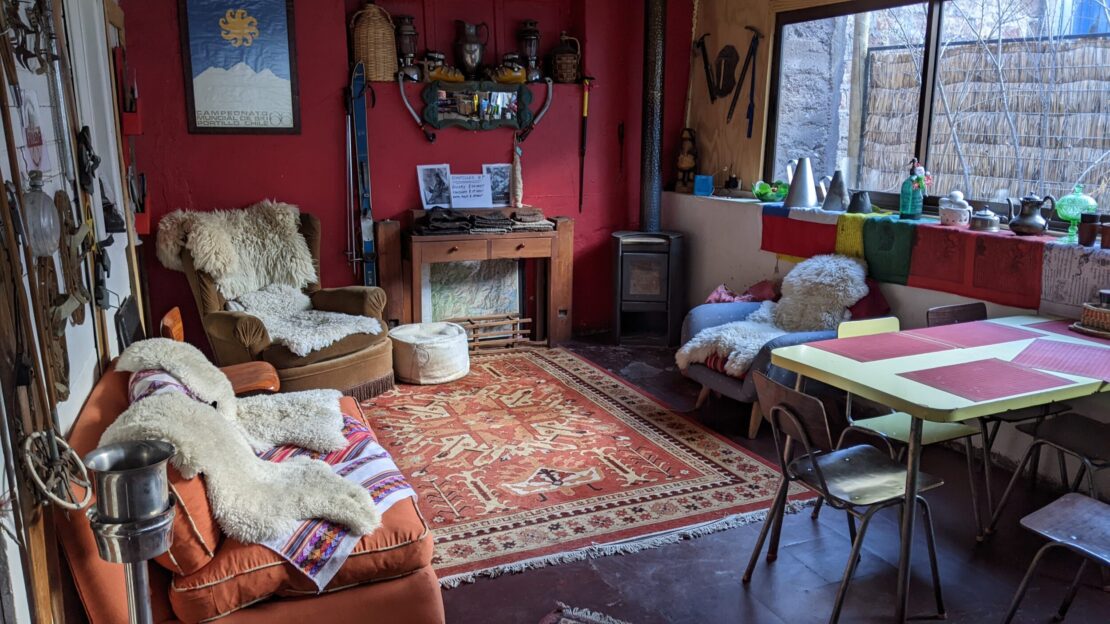
A BAD YEAR
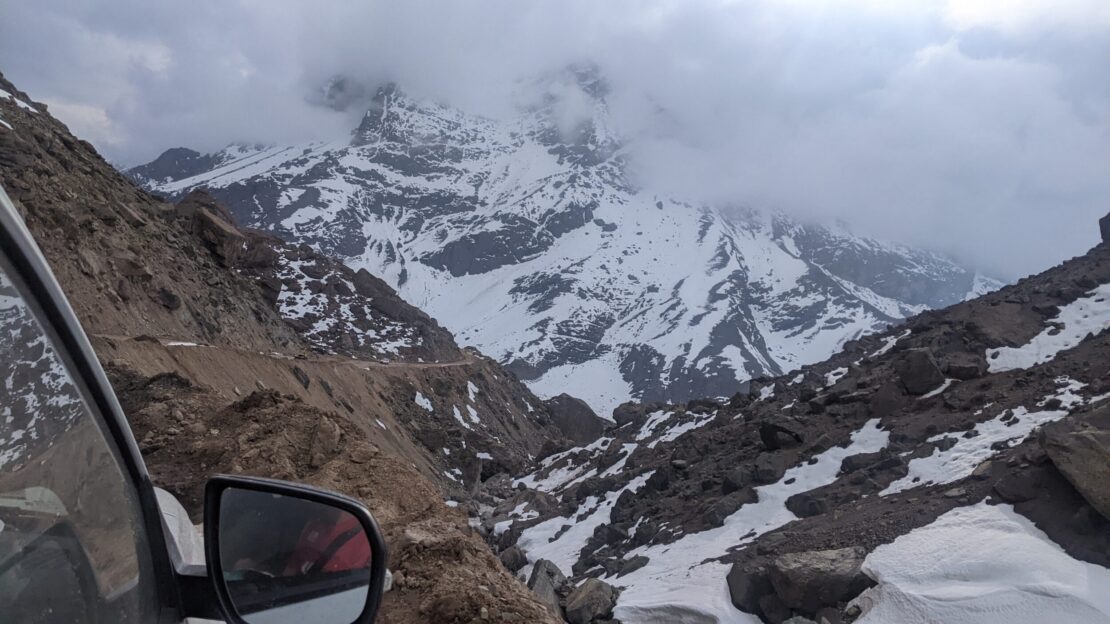
All the news before we’d left was doom and gloom. “The worst snow season in Chile in years.” Americans cancelling their vacations to Portillo ski area and warm temps and ski resorts in Argentina shutting down because of dry slopes. We’d come off the heels of one of the worst seasons in decades in the San Juans back home as well, but it also had allowed us dry access roads and stable conditions to ski powder in rock-walled corridors late into spring.
On the first afternoon, we drove up a dry access road to the exact spot I’d seen in the 2014 blog post – the couloirs of Cerro Arenas. Reconnaissance turned into a 5,000 ft climb to the top of a couloir, and 24 hours after having left a hot and dry Colorado, we dropped into boot top August Chilean powder.
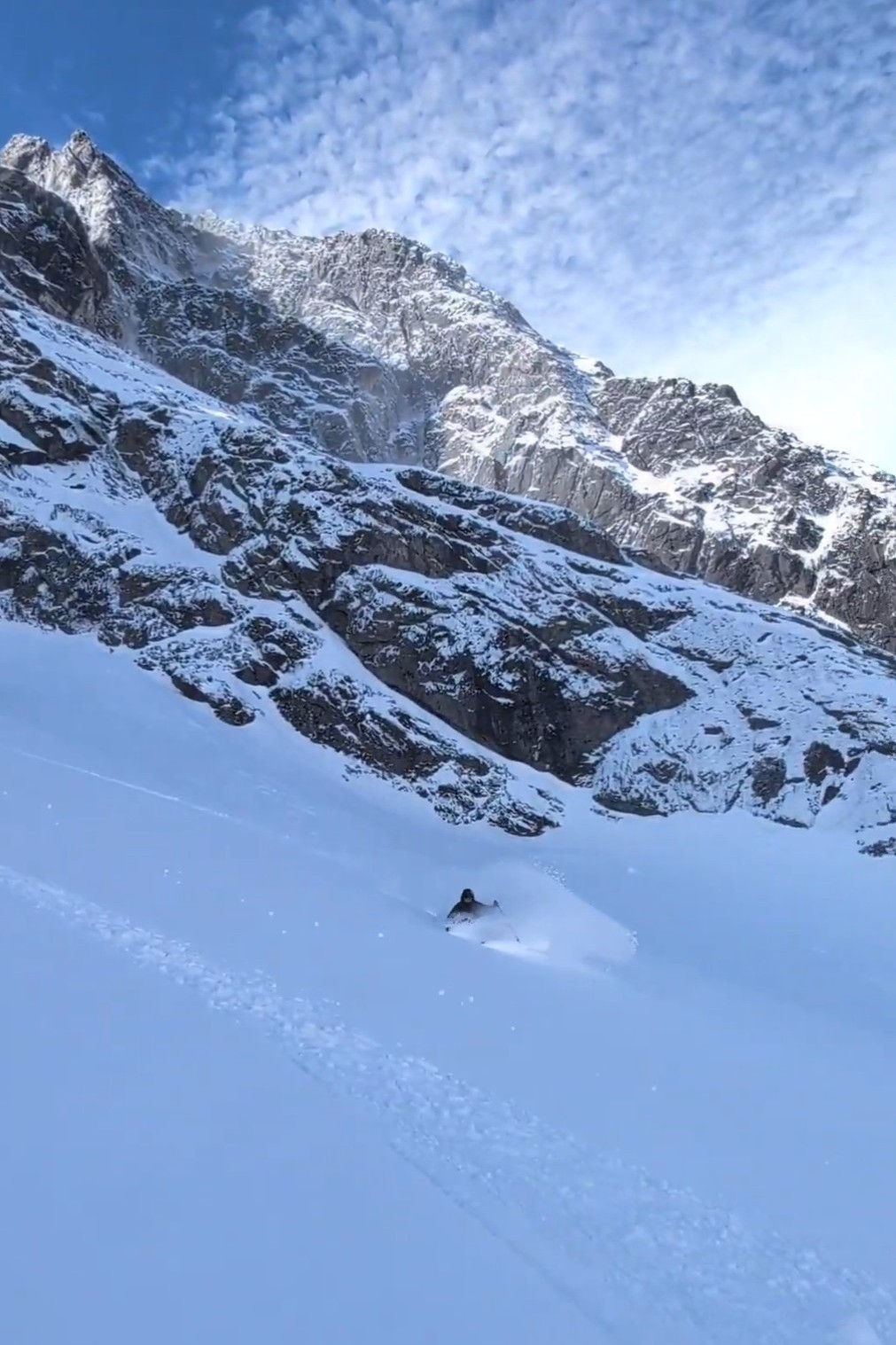
SENSE OF SCALE
In Colorado a very nice day of skiing from the summit of a large peak may net you 3,000 vertical feet. In the Andes, everything is scaled way up. What looked like car sized boulders were house sized boulders; what looked like a marvelous 2,000 ft corridor was a 4,000 ft monster that required a 2,000 ft hike up a snowy ramp just to reach the mouth. We skinned up and up from the car and climbed a massive 6,000 ft (a full day of rigorous trail breaking) to the top of one line only to glimpse Cerro Marmolejo (20,039 ft) seven thousand feet above us!
POWDER PARTY
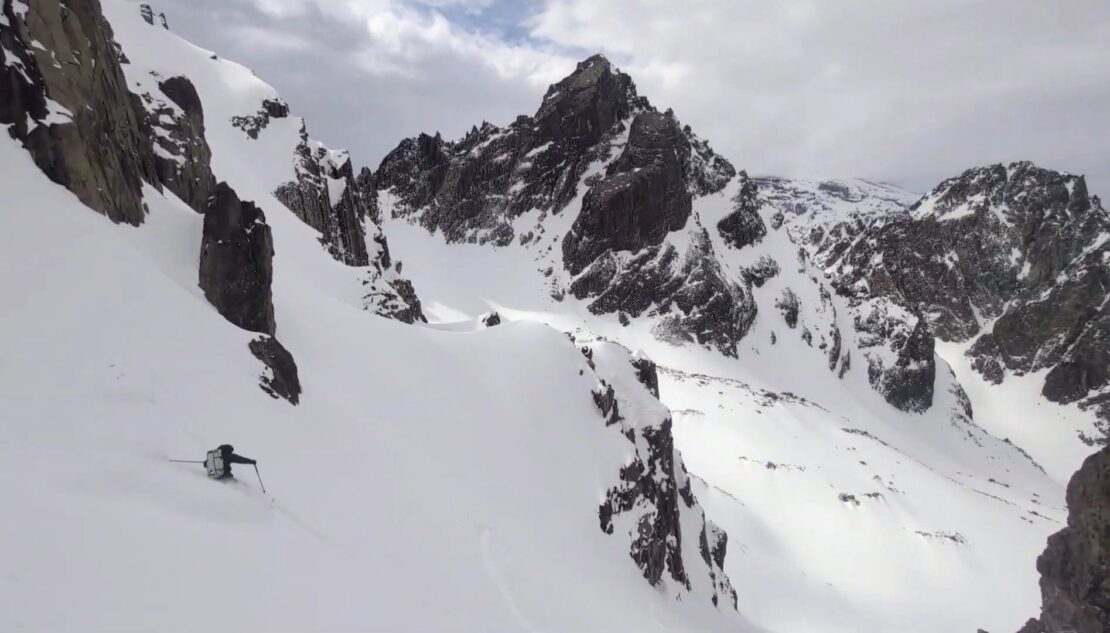
Despite arriving to a mostly dry village and relatively low snow year, we kicked off day one with a descent as big as the biggest in Colorado in soft powder snow and stable avalanche conditions. The powder party never stopped, as every few days a few more inches of snow fell.
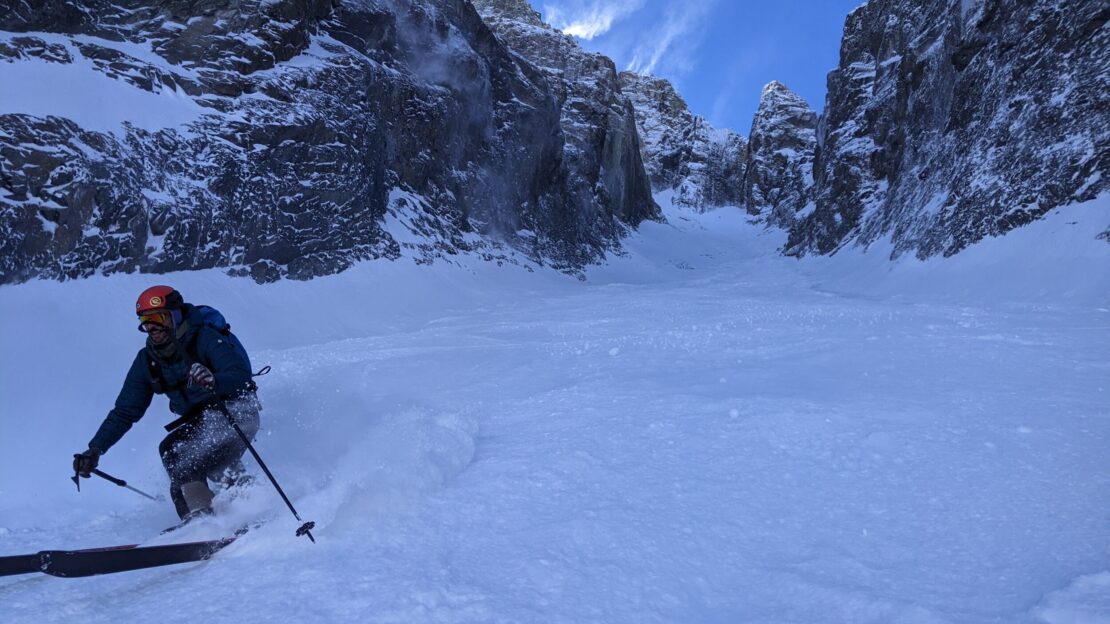
THE BIG ONE
After a week straight of living and breathing the Andes, rumors spread of the biggest storm of the season. North American influencers and bored off-season skiers booked flights at the last minute to catch the storm, which just so happened to be pointed right at Maipo…
So the powder party continued, and one day we awoke to find the South Pacific throwing all it had at our valley. We drove the car as far as we could, ditched it in a snowbank and headed up into the storm.
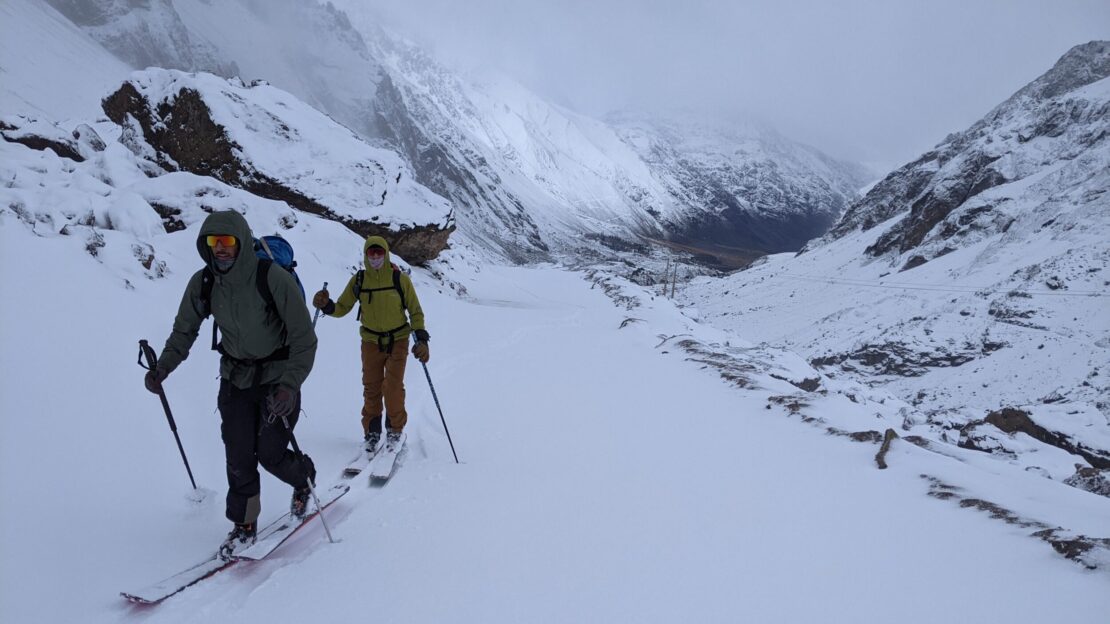
Wind is a normal part of the Andes, permanently stripping snow from the highest peaks and making a snow type called cartón or literally “cardboard”. Having cut our teeth skiing in Rocky Mountain National Park, we were all too familiar with cartón and a strong dose of wind. With wind and new snow, though, comes avalanche danger, and the mountains quickly told us to back off. So after a “short” 3,000 ft day we skied back down the road to the car and waited for things to settle down. Large avalanches would rock the high mountains above us for the coming days.
We awoke the next morning to a changed world. Multiple feet of snow had fallen in Baños Morales, and the formerly dry slopes above town called to us. Without any way to drive up the road – or get the very buried car out of its parking spot – we put our skis on at the door and skinned away.
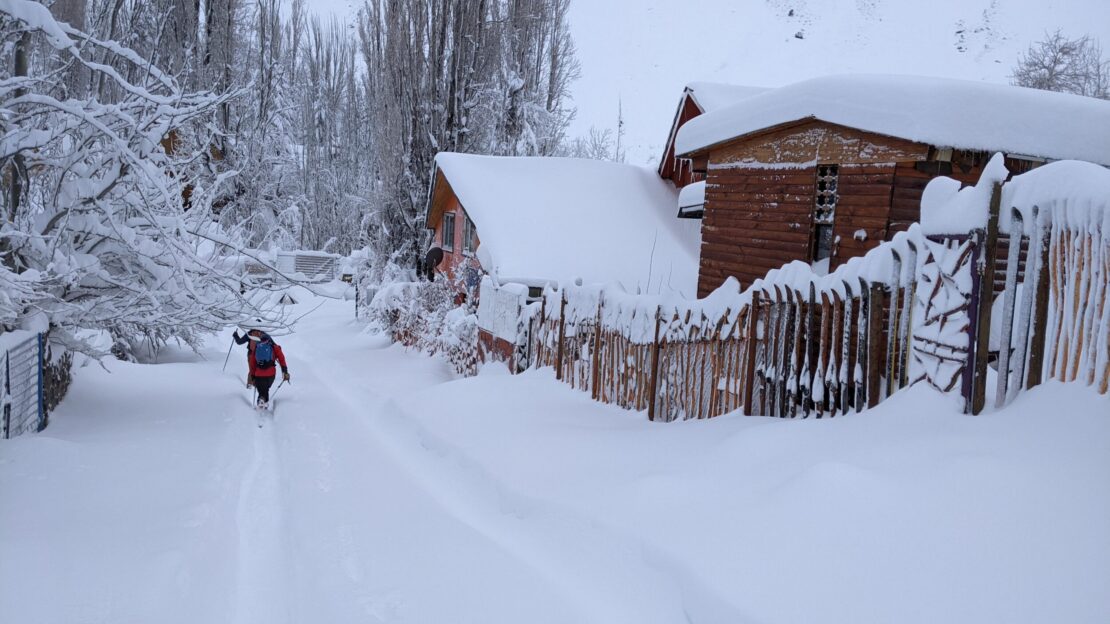
As crowds from around the world clogged the Portillo, La Parva, and Valle Nevado ski areas we were trapped alone here in paradise. We lapped over and over the steep powdery slopes above the village, and to our great privilege were joined only by the largest flying animals in the world – Andean Condors. Twelve feet across and three feet tall, the birds circled us, flew below us, and landed on the rocks around us.
The storm cleared and the road was plowed just in time for us to head back home. In two weeks we had skied 50,000 vertical feet and barely touched the surface of this canyon. Our legs and lungs were feeling it, and rations were desperately low (for our last day we split a single piece of bread three ways). Cajón del Maipo is a challenging, remote, and hostile place with snow and avalanche conditions that can change drastically day to day, and rewards fit and experienced ski mountaineers.
I wanted to stay forever.
Give us a call or shoot us an email to learn more about this unique, once in a lifetime ski trip!
By Jordan Diefenderfer – [email protected]
